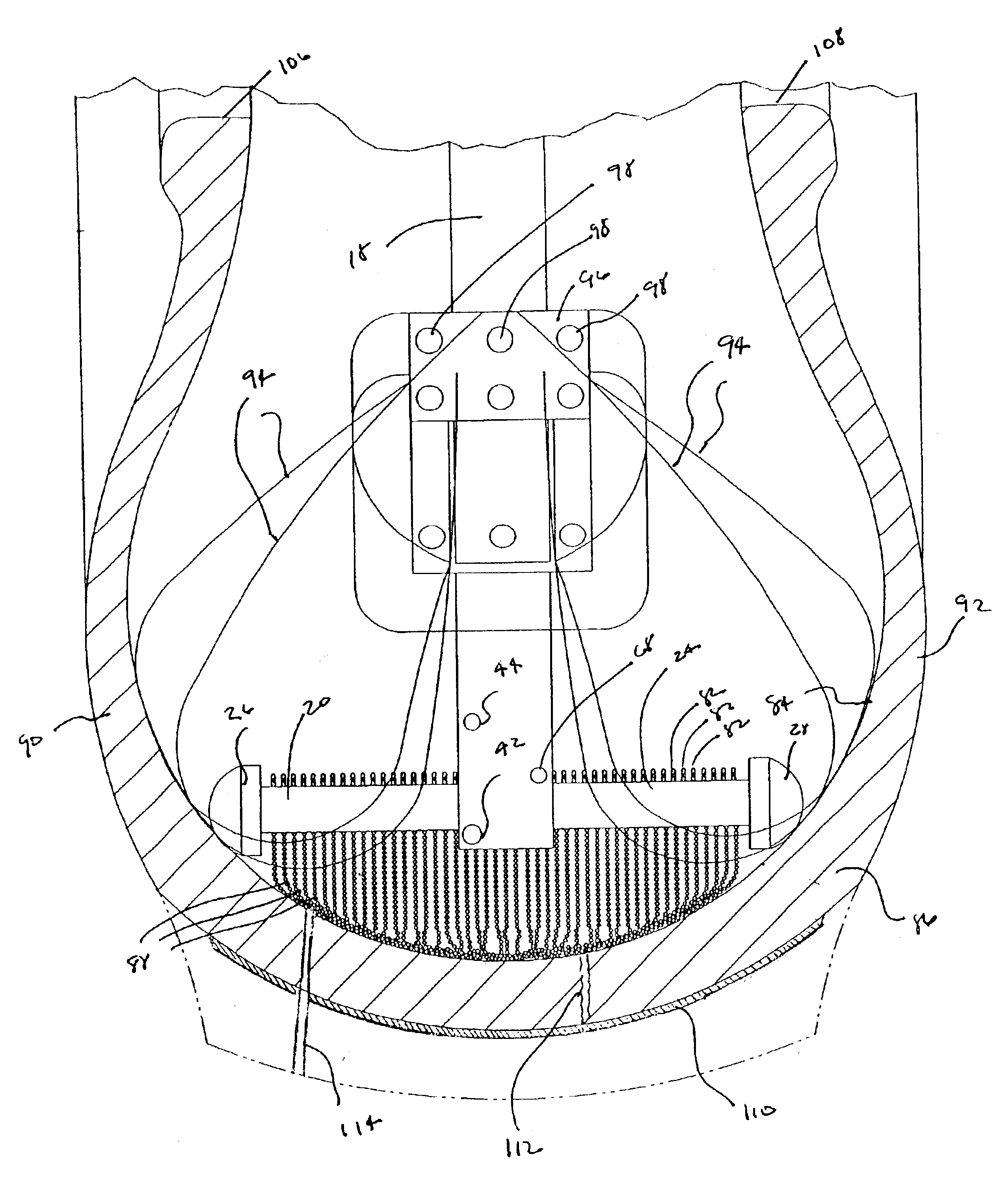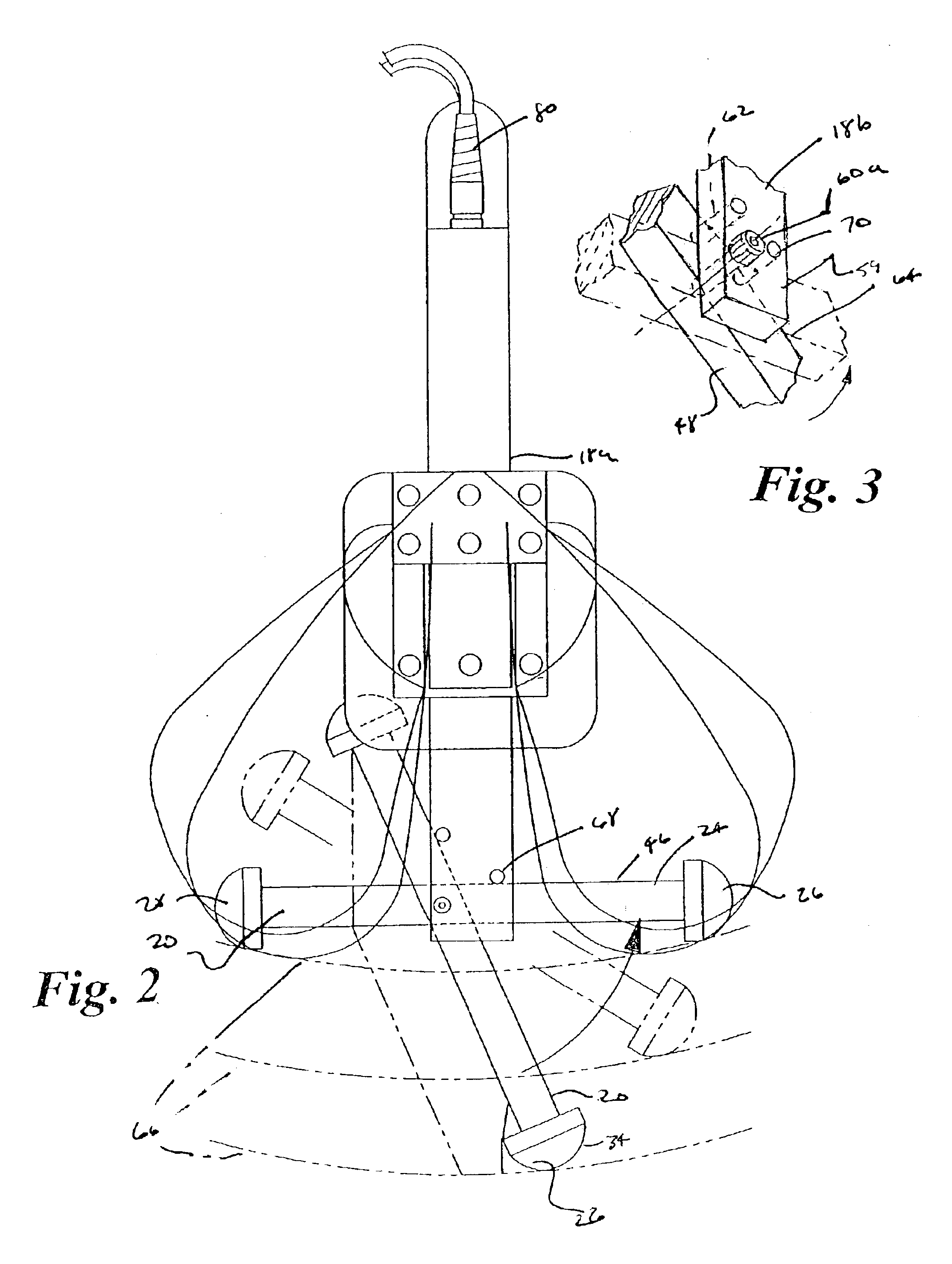Apparatus and method for electronic tire testing
a technology of electronic tires and apparatus, applied in vehicle testing, structural/machine measurement, ways, etc., can solve the problems of inability to reliably detect certain flaws, inability to detect flaws that involve defects too fine or too obscure to be seen visually, and inadvertently overlooked, so as to reduce equipment costs correspondingly, increase efficiency, and save time in the testing process
- Summary
- Abstract
- Description
- Claims
- Application Information
AI Technical Summary
Benefits of technology
Problems solved by technology
Method used
Image
Examples
Embodiment Construction
[0025]Tire testing apparatus 10 generally includes high-potential electrical power source 12 and testing head 14. High potential electrical power source 12 may be a voltage generator used to generate a high voltage, such that the electric arcs produced upon detection of a flaw are visible to a human eye. In one embodiment the high potential electrical power source 12 may produce a voltage of approximately 40,000 volts. In other embodiments, voltages of from 20,000 to 60,000 volts may be used. Any voltage, including those within and outside the range of the voltages listed herein, may be used within the scope of the tire test apparatus 10 of the invention. The high potential electrical power source 12 shown in FIG. 7 may be contained within a box with wheels 16 such that it may be easily moved in a tire retread shop to different areas. U.S. Pat. Nos. 4,520,307 and 6,304,090 each disclose high potential electrical power sources 12 that may be suitable for use with the invention. Other...
PUM
 Login to View More
Login to View More Abstract
Description
Claims
Application Information
 Login to View More
Login to View More - R&D
- Intellectual Property
- Life Sciences
- Materials
- Tech Scout
- Unparalleled Data Quality
- Higher Quality Content
- 60% Fewer Hallucinations
Browse by: Latest US Patents, China's latest patents, Technical Efficacy Thesaurus, Application Domain, Technology Topic, Popular Technical Reports.
© 2025 PatSnap. All rights reserved.Legal|Privacy policy|Modern Slavery Act Transparency Statement|Sitemap|About US| Contact US: help@patsnap.com



